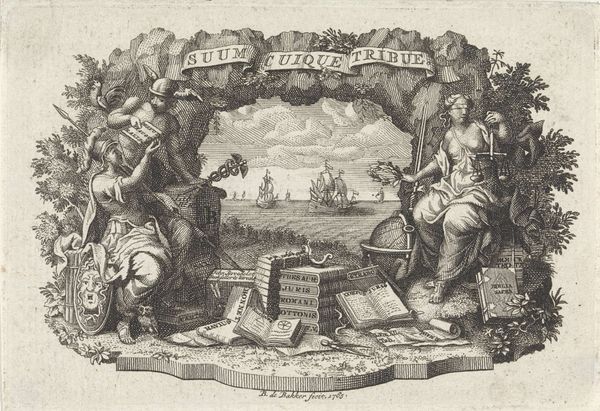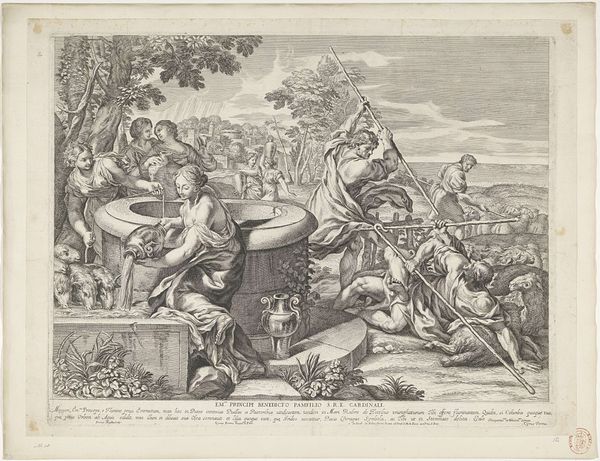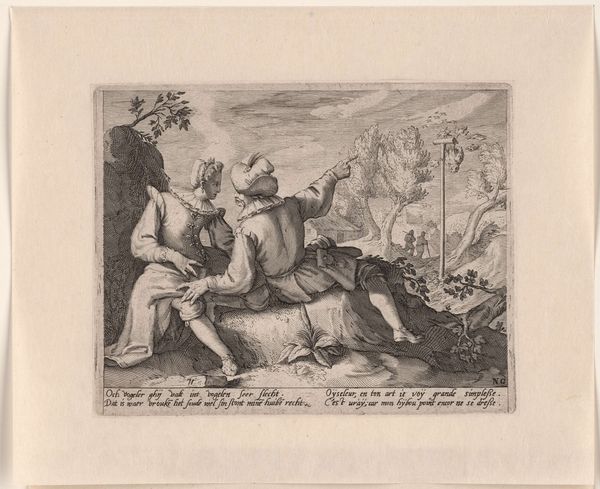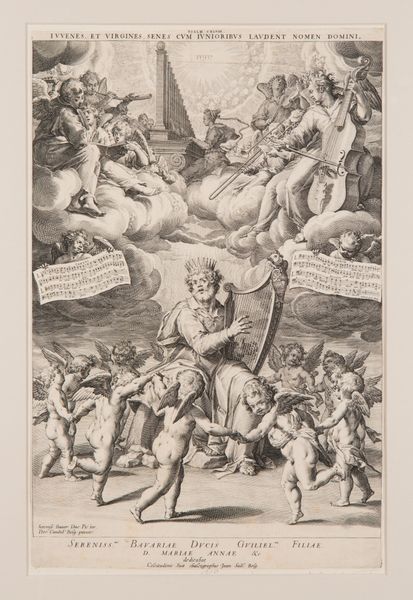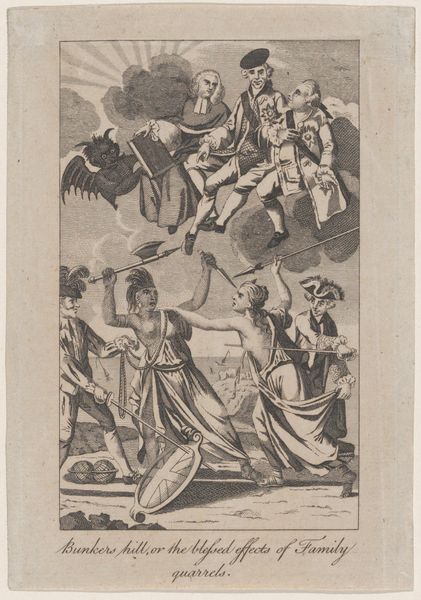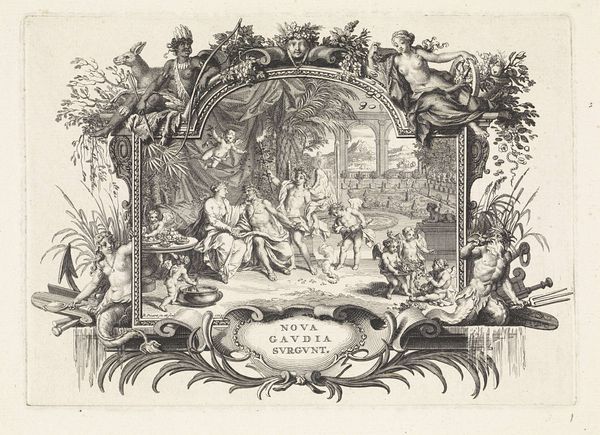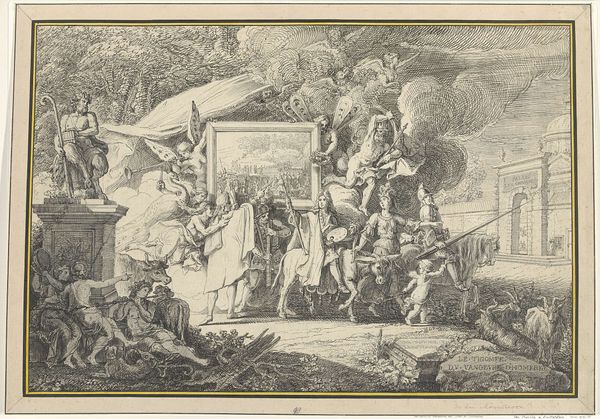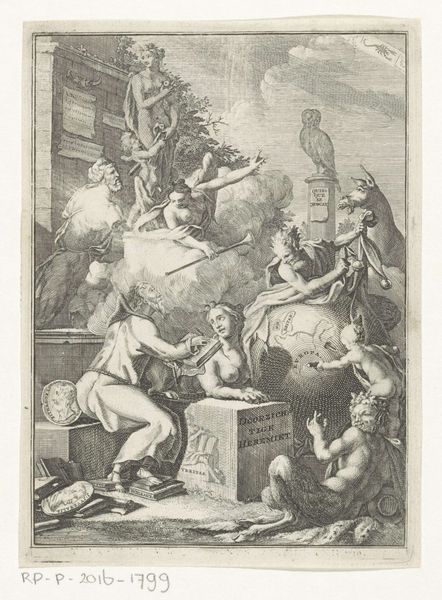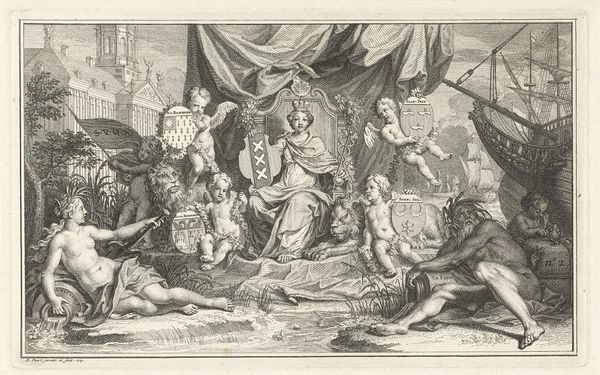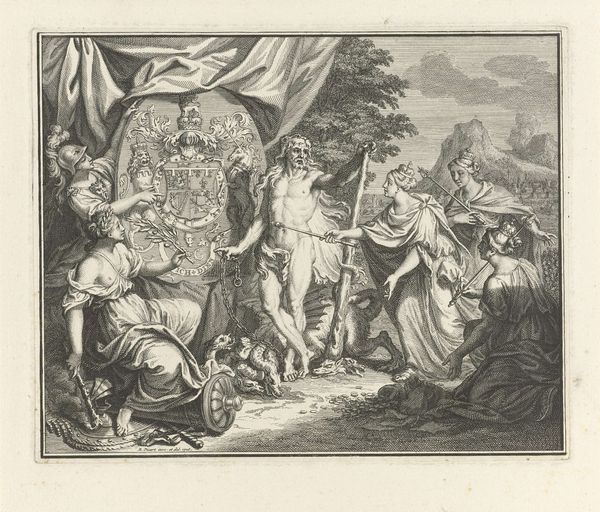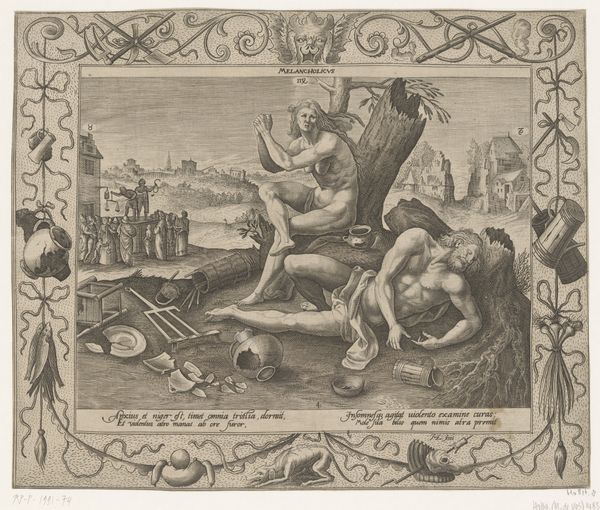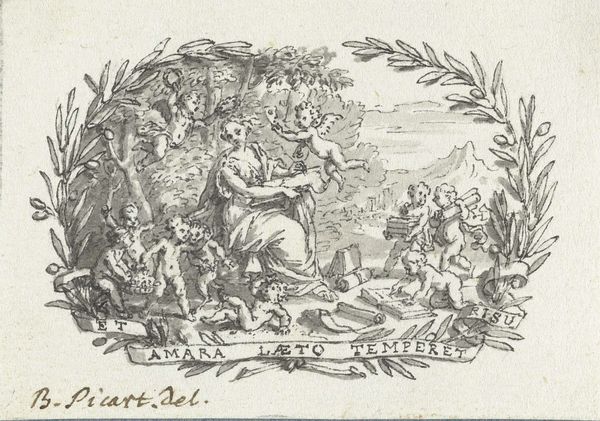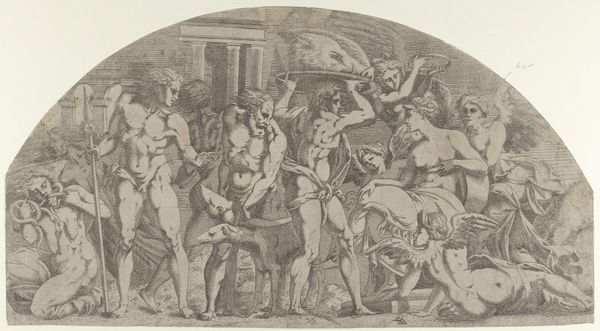
Hollandse maagd wordt aangevallen door soldaat en beschermd door Vader Tijd in omlijsting met wapentrofeeën 1681 - 1746
0:00
0:00
francoisvanbleyswijck
Rijksmuseum
engraving
#
allegory
#
baroque
#
war
#
old engraving style
#
pen-ink sketch
#
history-painting
#
engraving
Dimensions: height 130 mm, width 172 mm
Copyright: Rijks Museum: Open Domain
Editor: Here we have François van Bleyswijck's engraving, "Hollandse maagd wordt aangevallen door soldaat en beschermd door Vader Tijd in omlijsting met wapentrofeeën," dating roughly from 1681 to 1746. The allegorical scene is striking—there's a real sense of violence, even in the precision of the engraving. What do you see when you look at this piece? Curator: It's crucial to understand the material conditions that allowed for the proliferation of such images. Engravings like these weren't just artistic expressions; they were products of a complex system of labor and trade. The very act of etching lines into a copper plate, the specialized tools, the ink, the paper, all point to a highly developed, capitalist mode of production. Who would have purchased this image and why? What were their values? Editor: So you're focusing on how the image itself was produced, and the socio-economic context? Curator: Precisely. And look at the imagery. The "Hollandse Maagd" is being attacked, and Father Time intervenes. What kind of national identity is being manufactured and consumed here? How does this engraving function as a commodity in the construction of Dutch identity during a time of conflict? Who were these conflicts with and how did the patrons use national allegories to support warfare? Editor: That's a fascinating angle. I was initially drawn to the dramatic scene itself, but thinking about its production and consumption opens up a whole new perspective on its meaning and how the image was used. Curator: Exactly! We move away from simply admiring the artwork to investigating the political economy of image-making. By examining the materiality of the engraving, we can start to decipher how it functioned within the power structures of the time. What purpose did the weaponry in the engraving’s periphery play in solidifying patriotism and wartime production? Editor: I see it now - the engraving is not just representing an idea, it’s actively participating in shaping it and boosting production through patriotic appeal. It all seems less innocent. Thanks for helping me look deeper. Curator: The layers within layers always fascinate. We can dig more in the future!
Comments
No comments
Be the first to comment and join the conversation on the ultimate creative platform.
